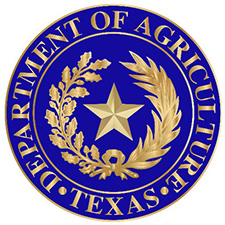Promise of Japan deal caps Trump’s turbulent weekend on trade
In 48-hour span, starting Friday, President Trump roiled global markets by Tweeting his intention to again raise tariffs on China and ordering U.S. companies out of the country, then appeared to backpedal, saying at the G7 summit he was having “second thoughts” about the U.S.-Sino trade war. The weekend ended with a bit of potentially good news on trade, when Trump and Japan President Shinzo Abe announced an agreement “in principle” on a deal that would include Japan buying surplus corn from the U.S.
TODAY’S QUICK HITS
Corn, soy crop forecast declines (ProFarmer): The Pro Farmer Midwest Crop Tour on Friday projected the corn crop at 13.358 billion bushels this year, down from the USDA’s August forecast of 13.9 billion bushels, the smallest since 2013. It also pegged the soybean crop at 3.497 billion bushels, down from the 3.68 billion bushels projected by the USDA in August.
Labor contractor under scrutiny (Investigate Midwest): Farmworkers with H-2A temporary work visas status were forced to work with little food and water in Missouri, losing money in the process.
Can ‘phage therapy’ solve ag’s ABX problem? (Scientific American): Researchers are excited about the prospect of “using viruses known as bacteriophages to kill pathogenic bacteria.”
Court dismisses suit over ‘other white meat’ payments (Agri-Pulse): Judges say an Iowa farmer failed to prove that the National Pork Board’s payments to National Pork Producers Council for the “Pork: The Other White Meat” trademark harmed him economically.
Taking food allergens seriously (NPR): European food makers are required to list up to 14 food allergens, and some restaurants refuse service to people with allergies because they can’t guarantee an allergen-free meal.
ON THE CALENDAR
Monday
– Anniversary of adoption in 1920 of the 19th Amendment, assuring women’s suffrage. The day also is celebrated as Women’s Equality Day. The campaign for the vote began at the Seneca Falls convention — the world’s first women’s rights convention — in upstate New York in 1848.
– Agriculture Secretary Sonny Perdue and Rep. Denver Riggleman, Virginia Republican, hold roundtable discussion with stakeholders after touring a poultry farm, 9:30 a.m. ET, Charlottesville, Virginia.
– Senate Finance chairman Chuck Grassley and Tom Vilsack, agriculture secretary during the Obama era, tour a dairy plant and hold a news conference to promote adoption of the United States-Mexico-Canada Agreement, 11 a.m. CT, Des Moines.
– Farm Credit Council holds Review, Audit and Appraisal Workgroup RAAW Conference, through Wednesday, Boston.
– USDA releases Census of Agriculture report on American Indian Reservations, noon ET.
– USDA releases weekly Crop Progress report, 4 p.m. ET.
Tuesday
– Farm Progress Show, “the world’s fair of agriculture,” through Thursday, Decatur, Illinois.
– USDA releases semi-annual U.S. and Canadian Cattle and U.S. and Canadian Hogs reports, 3 p.m.ET.
Wednesday
– USDA releases annual Citrus Fruits report, 3 p.m. ET.
Thursday
– USDA makes first forecast of fiscal 2020 agricultural exports and updates its forecast for this fiscal year, 3 p.m. ET. In May, the USDA said exports for fiscal 2019, ending Sept. 30, would fall more than 4 percent, to $137 billion, from 2017 levels due to the Sino-U.S. trade war and lower commodity prices. Since then, the two nations have announced additional tariffs on each other’s products.
– International Grains Council releases monthly Grain Market Report, London.
Friday
– USDA updates its forecast of farm income in 2019, 11 a.m. ET. In March, it pegged net farm income at $69.3 billion, up from $63.1 billion in 2018 due to higher commodity prices and larger livestock production. The USDA will hold a webinar at 1 p.m. ET to discuss the report. To register for the webinar, click here.
– Deadline for public comments on EPA proposal for the Renewable Fuel Standard for 2020.
– USA releases monthly Agricultural Prices report, 3 p.m. ET.
Sept. 2
– Labor Day, observed on the first Monday of September, was designated a federal holiday by President Grover Cleveland in 1894 to honor the contribution of American workers. The labor movement inspired local and statewide observances in the late 19th century. Creation of the “workingmens’ holiday” can be be viewed as an attempt by Congress to repair ties with unionized workers following riots in Chicago during the Pullman strike; the government sent troops to Chicago to try to break this strike. “Labor Day also symbolizes the end of the summer for many Americans and is celebrated with parties, parades and athletic events,” says history.com.











